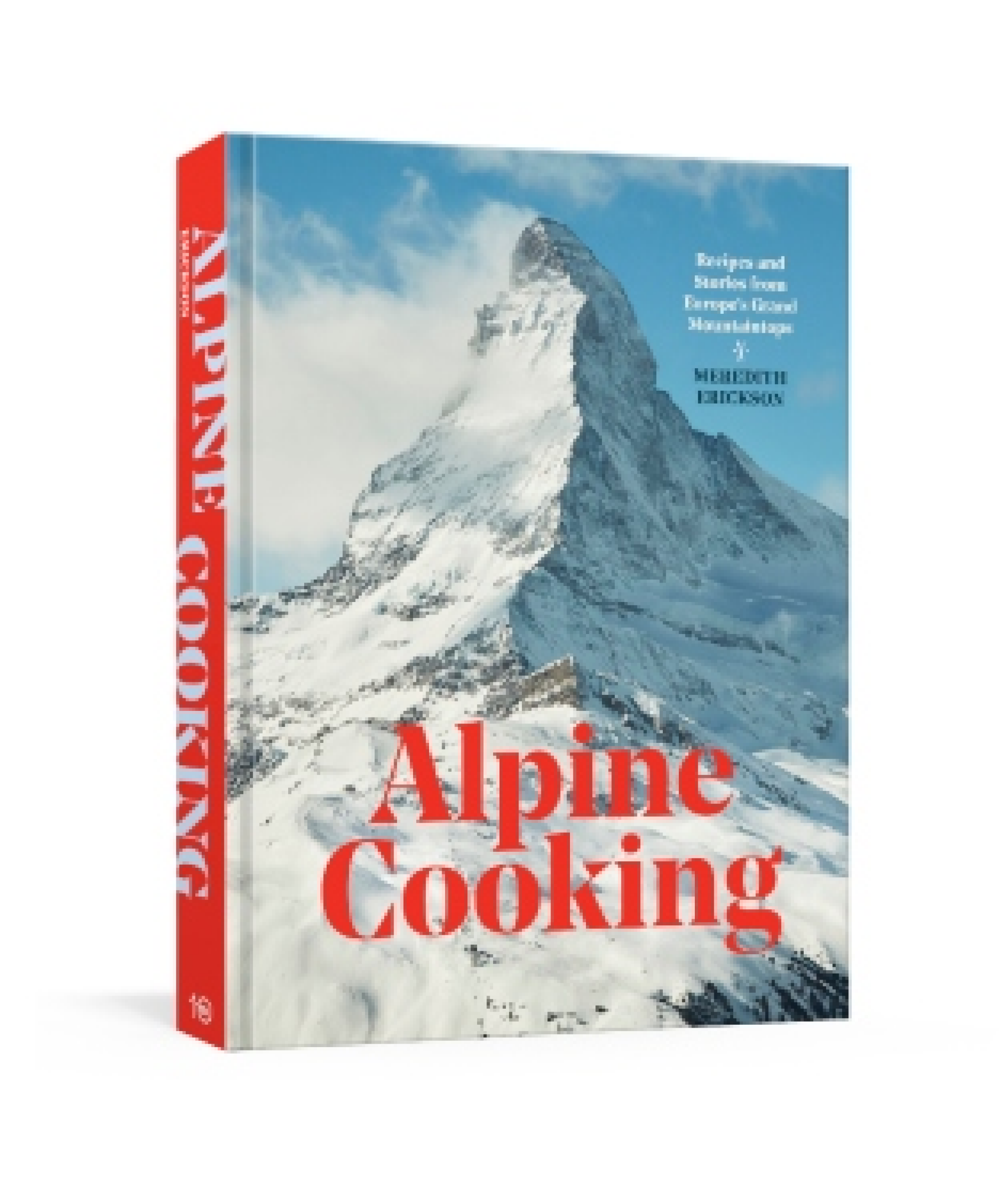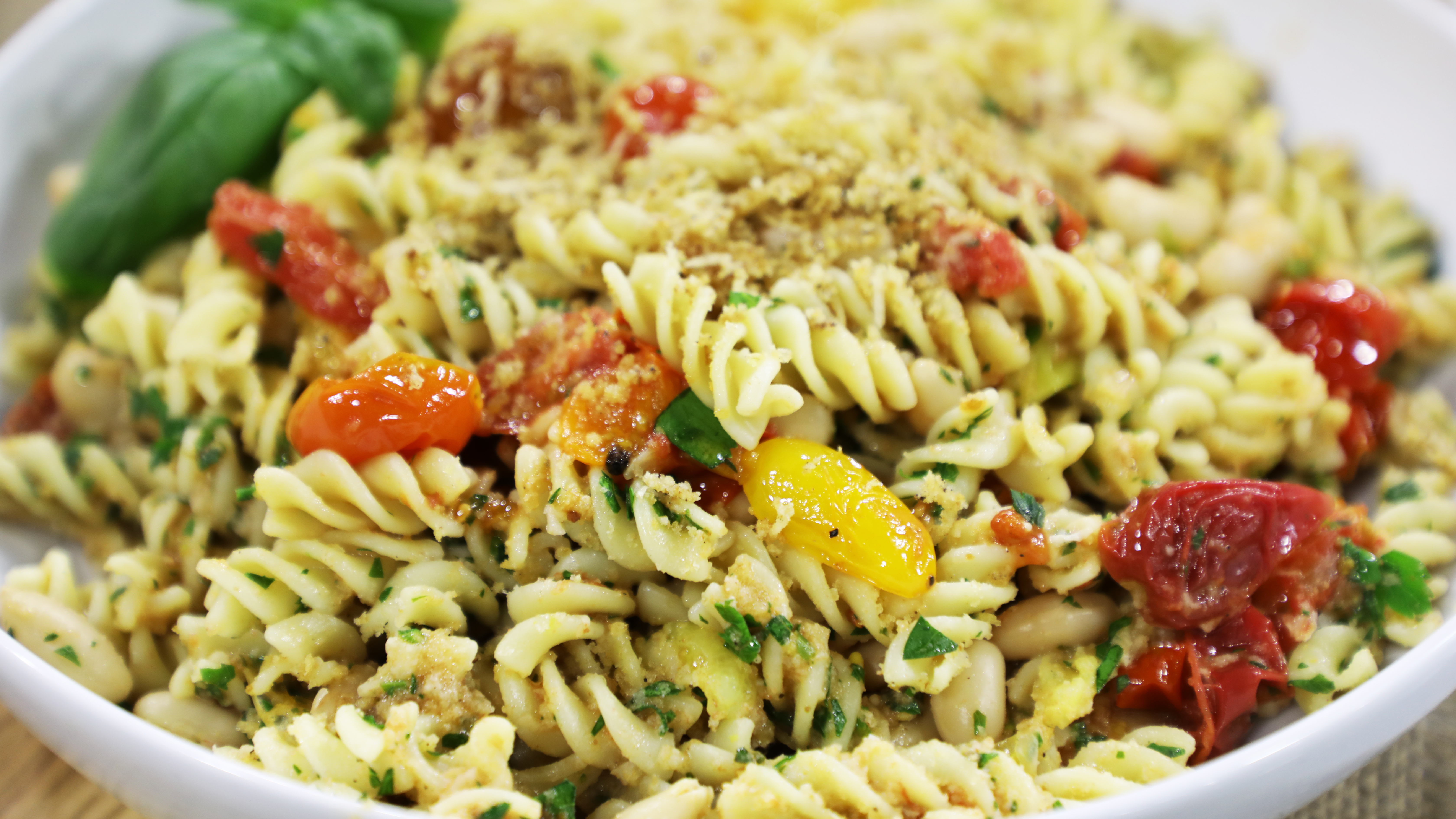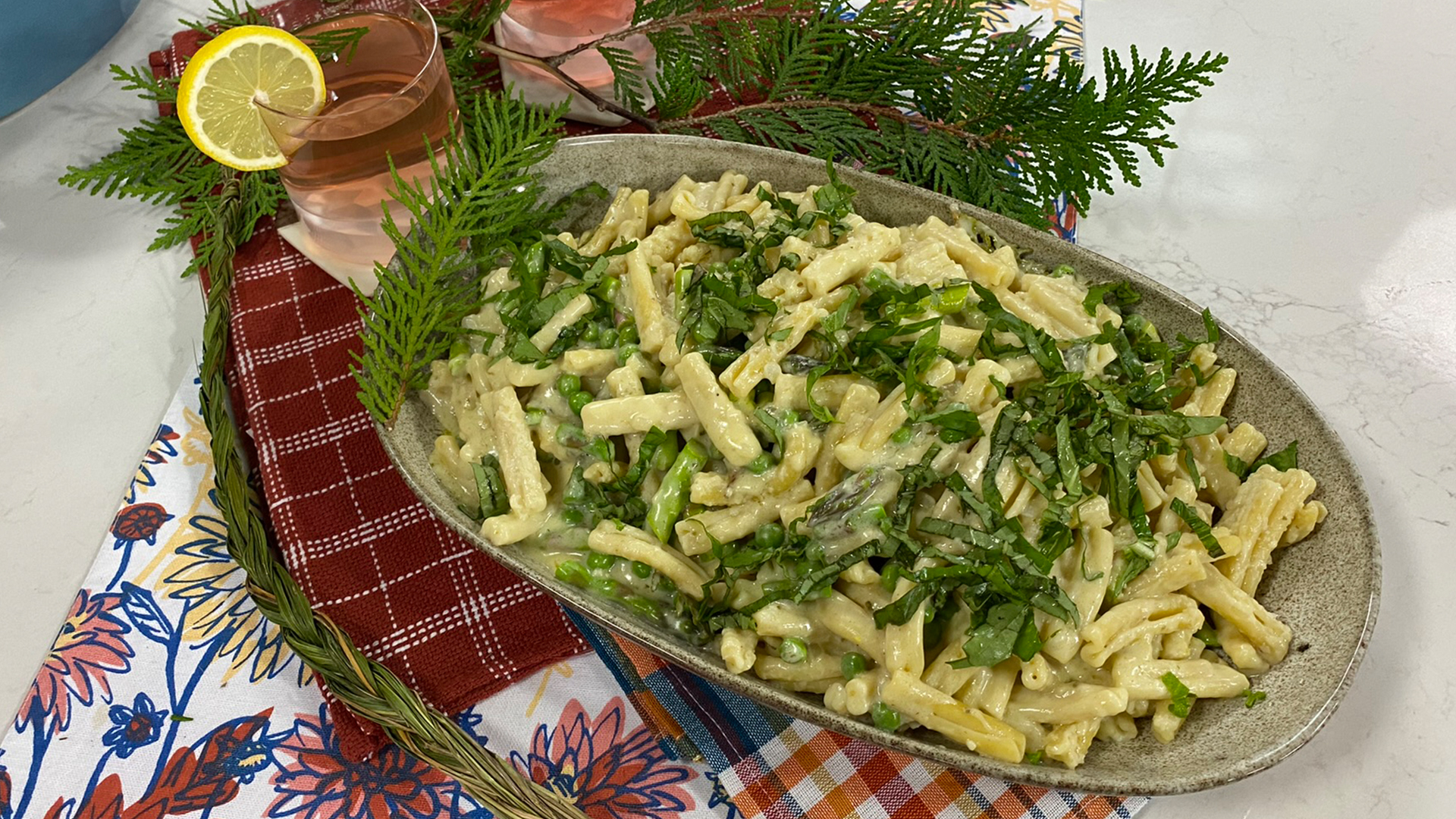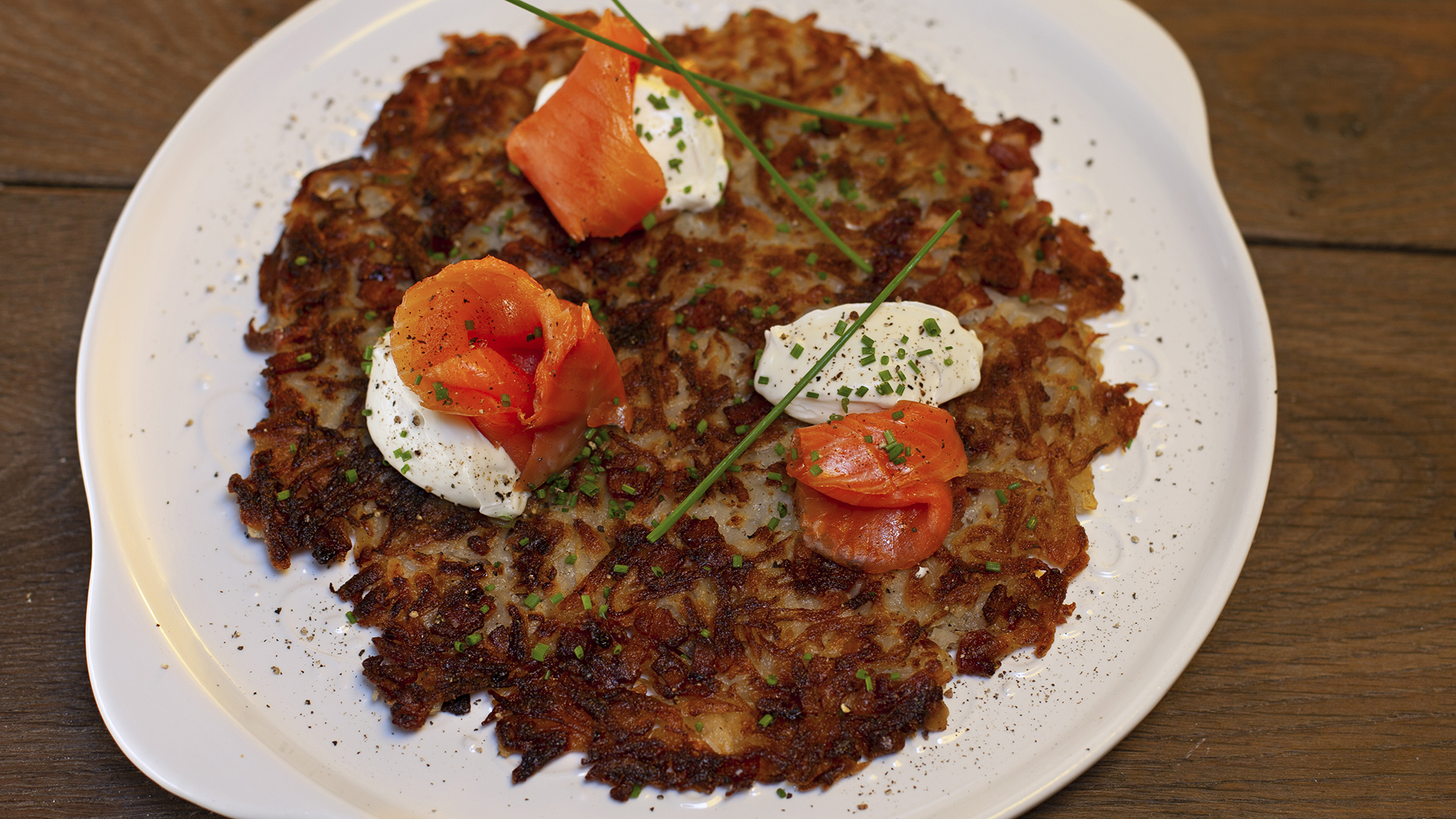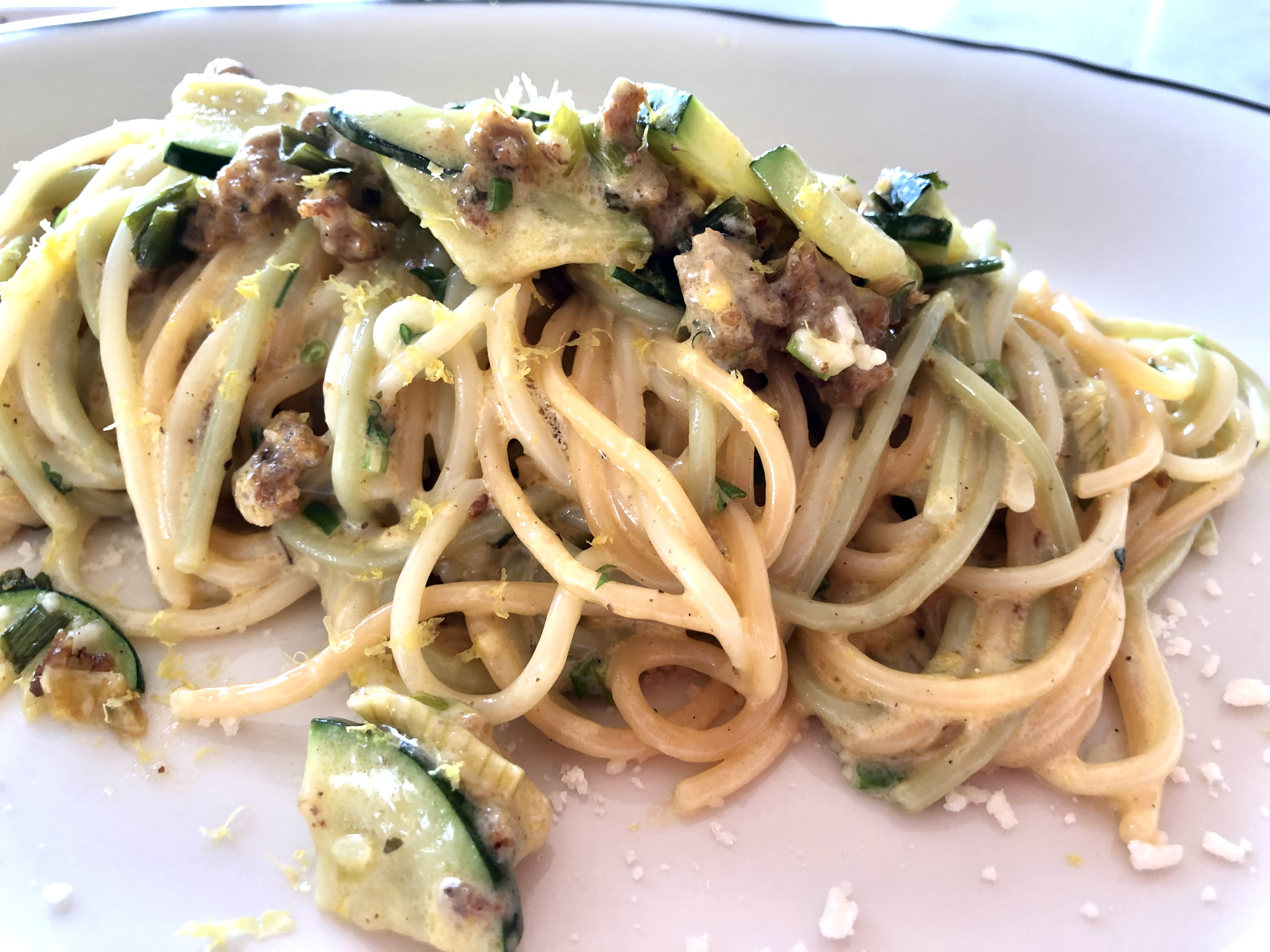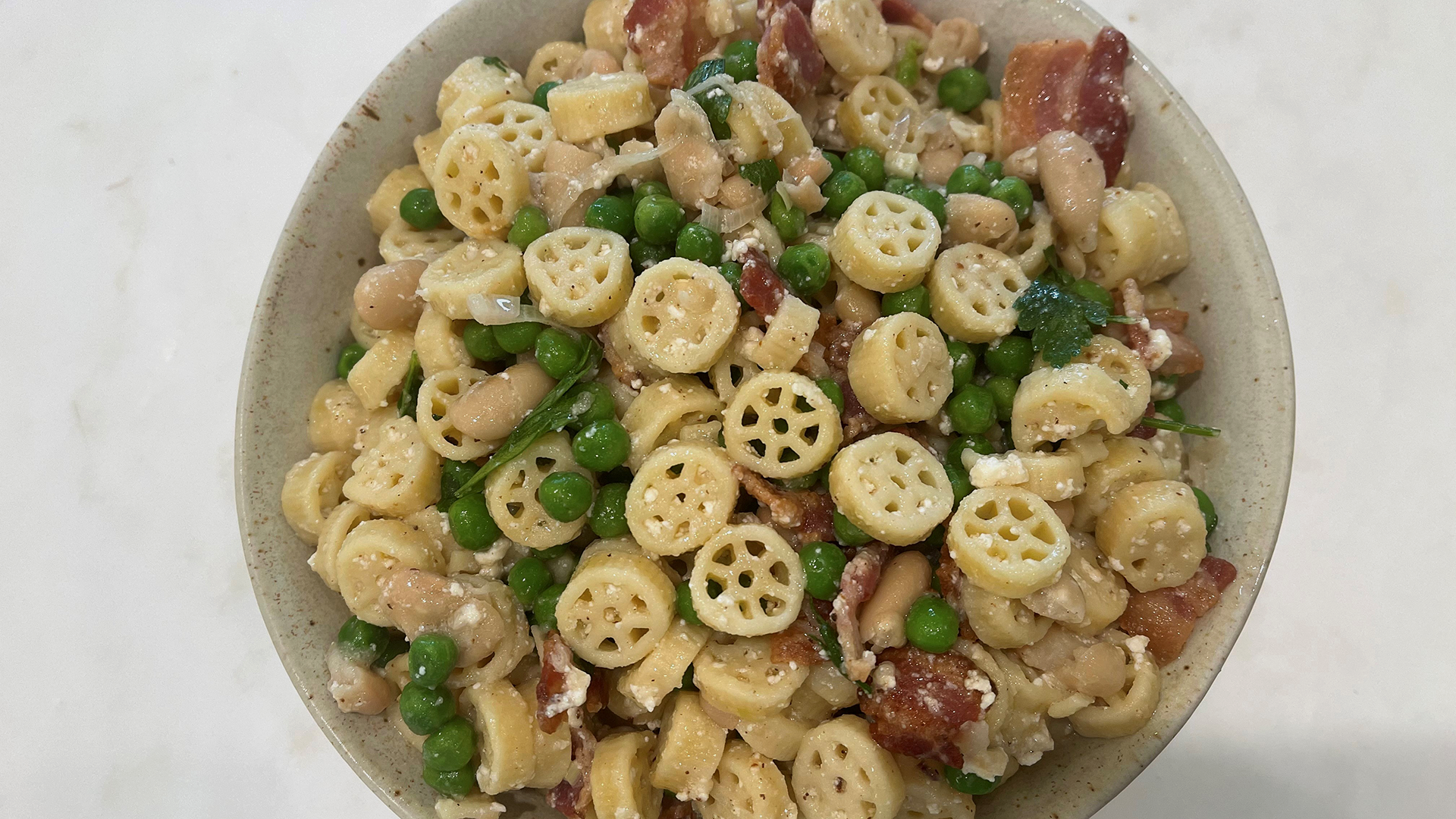CTV Recipes
Search Recipes
Grape and walnut pizokel

The area around Klosters in the far-eastern Swiss canton of Graubünden has been a renowned winter-sports resort ever since the British royals and Hollywood celebrities started favoring it in the 1950s (Davos is about 10 kilometers [6 miles] away). However, the area isn’t all glitz and glamour, especially in the more remote corners of the Prättigau region. Since the Walser settled in the valley between 1180 and 1313, life has been marked by the hard work of subsistence agriculture. People used what they could grow, breed, and harvest themselves.
Common in the region, Pizokel is a humble, nutritious entree made from flour, milk, and eggs—a type of fresh pasta not unlike spaetzle. There is no absolute pizokel recipe, because there are as many variants as there are grandmothers in the valley. The dough for pizokel could include potatoes, quark, or . . . even pork liver. This tends to be a versatile dish; the most common variation is baked with bacon, onions, and cheese. This variation, from the cooks at the Hotel Wynegg, one of the most traditional hotels in the region, is light and easy to re-create at home.
SERVES
Ingredients
- Spaetzle maker (see Note)
- Fine sea salt
- 3-1/2 cups (420 grams) all-purpose flour
- 3/4 cup plus 2 tablespoons (200 milliliters) milk
- 1 cup (200 grams) quark cheese
- 4 eggs
- Freshly ground black pepper
- Generous grating of nutmeg
- 2 tablespoons grapeseed oil
- 1/2 yellow onion, finely diced
- 1-1/3 cups (200 grams) seedless red and green grapes, halved
- 3/4 cup (90 grams) walnuts, coarsely chopped
- 1/3 cup (80 milliliters) white balsamic vinegar
- 1/4 cup (85 grams) honey
- 1/2 cup (120 milliliters) low-sodium vegetable broth
- 1/4 cup (55 grams) unsalted butter
- 1-1/2 cups (160 grams) 1 centimeter Taleggio cubes
- 2 tablespoons minced fresh flat-leaf parsley, plus 1 tablespoon flat-leaf parsley leaves
Directions
- Bring a large pot of water to a boil over high heat, add a generous amount of salt, turn the heat to medium, and cover; you want the water to just simmer throughout the cooking process.
- In a large bowl, combine the flour, milk, quark, eggs, one teaspoon salt, 1/2 teaspoon pepper, and nutmeg. Using a whisk at first, followed by a spatula, work the mixture thoroughly until the ingredients are well combined. (You can also make the dough in a stand mixer fitted with the paddle attachment.) The dough should be just pliable enough to pass through the holes in a spaetzle maker
- Work the dough quickly through the spaetzle maker! (If you don’t have a spaetzle maker, the traditional—and dextrous—way of making the pizokel is, working in batches, place a small amount of dough on a wet wooden chopping board and scrape the dough flat on the board with a flexible pastry scraper, forming strands that then careen off the edge of the board into the simmering water.) Give the strands a good stir and, when the pizokel float to the surface, less than three minutes after the water returns to a simmer, remove those noodles with a skimmer into a colander, then give them a good rinse under cold water to stop them from overcooking. Repeat until all of the pizokel have been shaped and cooked.
- In a large frying pan over medium-high heat, warm the grapeseed oil. Add the onion and sauté until it starts to colour, five minutes. Add the grapes and walnuts and stir well. Pour in the balsamic vinegar and deglaze the pan, stirring up the browned bits with a wooden spoon. Stir in the honey, followed by the vegetable broth, then toss in two tablespoons of the butter and simmer until the sauce becomes creamy, two to three minutes.
- In a second frying pan over medium-high heat, melt the remaining two tablespoons butter. Add the pizokel and fry until golden brown, one to two minutes.
- Stir the pizokel into the walnut-grape sauce, turn the heat to medium, add the Taleggio cubes, and stir for a minute or two to make sure the cheese is fully starting to melt. Stir in the minced parsley and season with salt and pepper.
- Divide the pizokel and sauce among shallow bowls and garnish with the parsley leaves. Serve immediately.
Note:
The pizokel dough can be made and shaped a day ahead. Grate the dough (yes, with a grater) onto a baking sheet lightly dusted with semolina flour, then refrigerate until ready to use, or freeze for four hours before transferring to a ziptop bag. These will keep frozen for up to two months.
Reprinted with permission from Alpine Cooking, by Meredith Erickson, copyright © 2019. Published by Ten Speed Press, a division of Penguin Random House, LLC.
Photographs copyright © 2019 by Christina Holmes.


